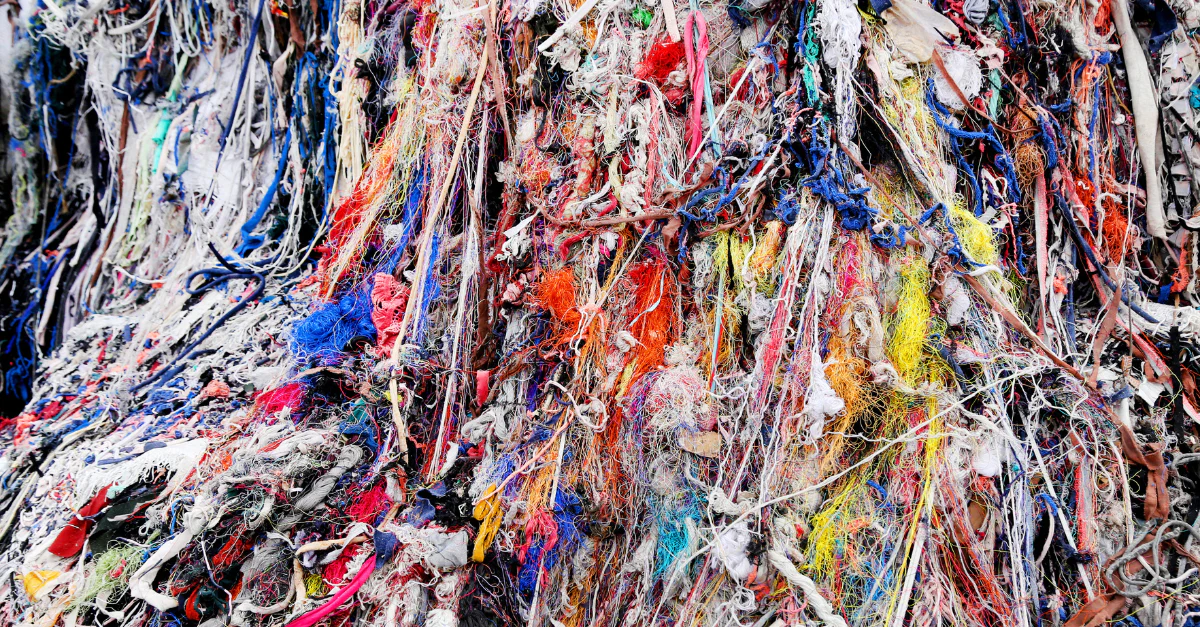In June 2023, the European Parliament overwhelmingly supported the EU's plan for sustainable and circular textiles. The vote had 600 in favour and only 17 against! This is exciting news!
So let's find out what it means.
Table of Contents
Why do we need to change the current, mainstream textile production?
Textiles play a vital role in our daily lives, from clothing and furniture to medical and protective equipment, buildings, and vehicles. However, the textile industry's environmental impact is a growing concern. In Europe, textile consumption ranks fourth in terms of its impact on the environment and climate change, following food, housing, and mobility. It is also the third largest water and land user, and fifth in terms of primary raw material usage and greenhouse gas emissions.

Every year, the average European discards 11kg of textiles, contributing to the escalating problem of textile waste. Shockingly, around the world, a truckload of textiles is either landfilled or incinerated every single second. The production of textiles globally has nearly doubled between 2000 and 2015, and the consumption of clothing and footwear is projected to rise by 63% by 2030. Unfortunately, this rapid expansion continues to strain resources, increase water usage, intensify energy consumption, and contribute to climate change. Urgent action is required to address the production and consumption patterns in the textile industry.
The textile sector is a significant employer, with over 1.5 million people working in more than 160,000 companies. In 2019 alone, the sector generated a turnover of €162 billion. Most of these enterprises are small and medium-sized, making it crucial to support their post-Covid-19 recovery, enhance their resilience, and attract skilled workers. Europe has always been a hub for innovation, creativity, craftsmanship, and high-quality textile products, and it should continue to be so.
To tackle the challenges posed by the textile industry, the EU has introduced the Strategy for Sustainable and Circular Textiles.
What is the EU strategy for sustainable and circular textiles?
The EU’s strategy for sustainable textile production aims to create a new sustainable ecosystem for textiles sold on the EU market by 2030, addressing the way they are produced and consumed.
This strategy adopts a comprehensive approach to achieve its objectives in a harmonised manner. It aligns with the commitments outlined in the European Green Deal, the new Circular Economy Action Plan, and the Industrial Strategy. The ultimate goal is to create a greener, more competitive, and modern textile sector that can withstand global shocks effectively.
By implementing sustainable practices, embracing circular economy principles, and promoting innovation, the EU aims to transform the textile industry. The strategy seeks to reduce the environmental impact of textile production and consumption, encourage resource efficiency, and promote responsible and ethical practices throughout the value chain. Through these efforts, the EU intends to support the recovery and future growth of the textile sector while preserving its core strengths.
What are the main actions included in the Strategy?
The strategy covers the entire life cycle of textile products and supports the transition to green and digital practices. It focuses on the design and consumption of textiles, including the use of sustainable technology and innovative business models.
Here are some of the measures proposed:
-
Introducing mandatory Eco-design requirements:
Textiles must meet minimum standards for including recycled fibres, making them longer-lasting, easier to repair, and more recyclable. -
Ending the destruction of unsold or returned textiles:
the EU Commission has proposed a transparency obligation mandating large companies to publicly disclose the number of products they discard and destroy (including textiles) and their strategies regarding reuse, recycling, incineration, or landfilling. -
Addressing microplastic pollution:
The strategy targets the release of microplastics from textiles by considering the entire product chain, from manufacturing processes to pre-washing, labelling, and promoting innovative materials. -
Digital product passport (DPP):
Textile products sold in the European market will require a digital passport disclosing information about circularity and key environmental aspects, such as materials, chemicals, carbon footprint, and water impact. -
Increased transparency and consumer protection:
The regulation aims to provide clearer information about textiles, enforce stricter rules to prevent greenwashing, and establish links to the Green Claims Initiative. -
Extended producer responsibility (EPR):
Harmonized EU rules will be introduced to hold producers responsible for the entire life cycle of textiles. Economic incentives, such as adjusting fees based on sustainability, will be part of the Waste Framework Directive revision in 2023. -
Support for research, innovation, and skills development:
The strategy aims to encourage research, innovation, and investments in the textile industry to facilitate the transition to greener and more digital practices.
Who is affected by the EU strategy for sustainable and circular textiles?
The proposal aims to make the entire textile industry more sustainable by making it mandatory for both designers and producers to integrate transparency and circular principles into their businesses.
The proposed requirements include taking into account quality, durability, longer use, repair, and reuse in the production process. Producers also have to take greater responsibility for their products along their entire value chain, from when the textile is produced until it becomes waste. The proposal will especially affect the fast fashion industry as they will have to make a shift in how they produce their clothes.
As the textile industry will need help to make this shift possible, DAMō will support it in this transition, by creating an online workspace to find practical solutions for both designers and producers.
It seems that whether the fashion industry is ready for it or not it will need to change in order to continue doing business. We are building new foundations for the construction of a more wholesome and fairer industry, and we all play a crucial role in this process!